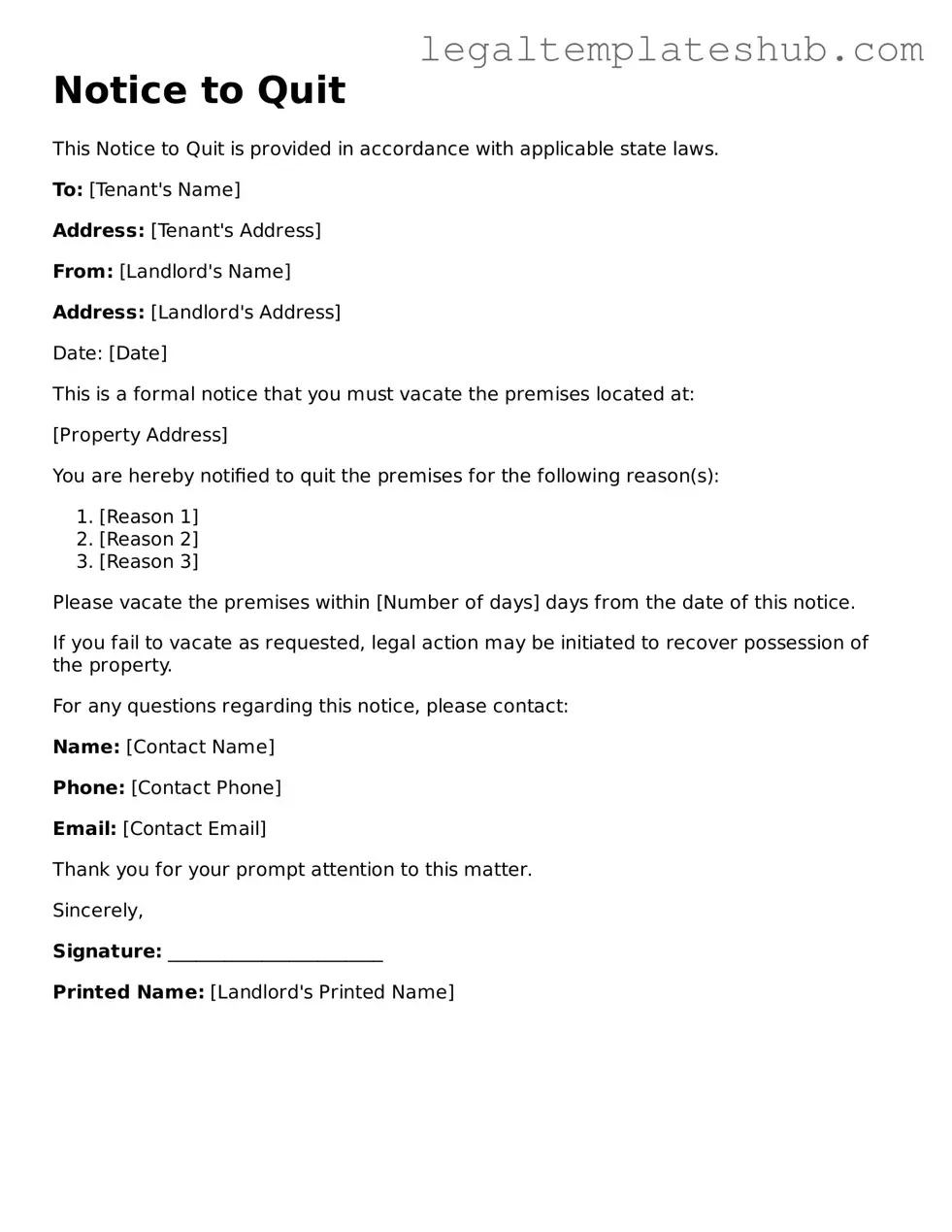Printable Notice to Quit Template
The Notice to Quit form is a legal document used by landlords to inform tenants that they must vacate the rental property. This notice typically outlines the reasons for eviction and provides a specific timeframe for the tenant to leave. Understanding how to properly complete and serve this form is crucial for ensuring compliance with local laws.
If you need to fill out a Notice to Quit form, click the button below for assistance.
Access Editor
